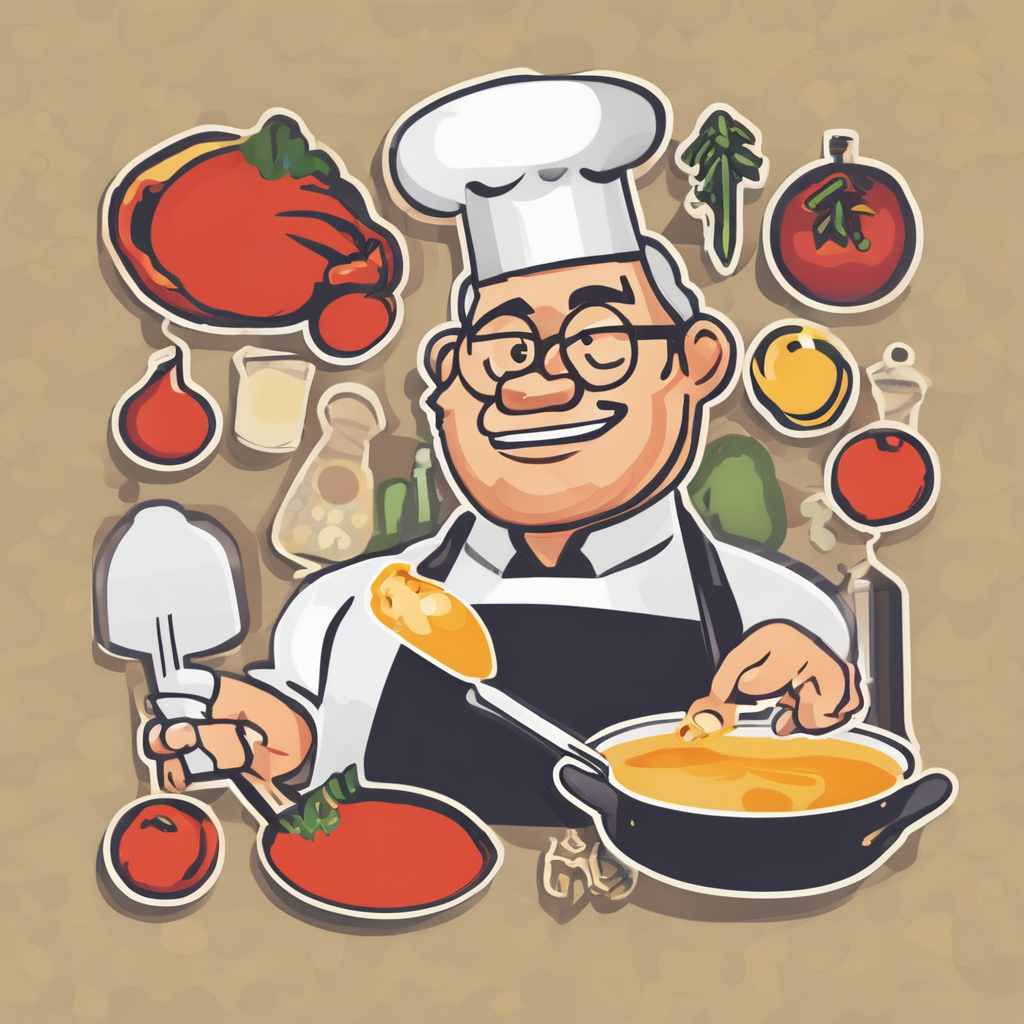Family dining can be a challenging balancing act. How do you create a menu that delights both discerning adults and picky kids? The answer lies in creativity. By blending flavors, textures, and fun presentations, you can design meals that excite everyone at the table. Discover practical tips for crafting a menu that satisfies all ages, turning mealtime into an enjoyable and memorable experience for the whole family. Embrace the joy of cooking together while catering to diverse tastes.
Understanding Family Dining Preferences
Exploring the balance between taste and nutrition.
Also read : Elevate your bar design: key strategies for creating a stunning and functional space
Exploring Dietary Preferences
When it comes to family dining preferences, both children and adults often have distinct tastes. Kids may favor familiar flavors and fun presentations, while adults might lean towards more sophisticated or health-conscious choices. Understanding these preferences is crucial for crafting meals that satisfy everyone. For instance, while children might enjoy a classic mac and cheese, adults could appreciate a gourmet twist with added vegetables or spices.
Balancing Nutrition and Taste
A key challenge is balancing nutritional needs with taste preferences. To achieve this, consider incorporating a variety of food groups into meals. For example:
Topic to read : Eco-friendly tactics for restaurants: reduce your carbon footprint with smart practices
- Kids meal ideas: Whole grain pasta with hidden vegetables.
- Adult meal ideas: Grilled chicken salad with diverse greens.
This approach ensures that meals are both nutritious and appealing to all family members.
Encouraging Family Involvement
Involving the entire family in meal planning can make a significant difference. Encourage each member to suggest their favorite meals or ingredients. This not only fosters a sense of involvement but also ensures that everyone's tastes are considered. As a result, meal times can become a collaborative and enjoyable experience for the whole family.
Creative Menu Ideas for All Ages
Discovering the joy of versatile family meals.
Versatile Recipes for Every Palate
Creating versatile recipes that appeal to both children and adults can transform meal times into delightful experiences. Consider dishes that blend familiar flavors with a creative twist. For instance, a traditional pizza can be enhanced with a variety of toppings like spinach and feta for adults, while keeping a section with classic pepperoni for the kids.
Kid-Friendly Dishes with a Twist
Kid-friendly dishes don't have to be bland. By incorporating hidden vegetables or fun shapes, these meals can be both nutritious and exciting. A simple dish like spaghetti can be transformed into a playful experience by using spiralized zucchini noodles alongside regular pasta.
The Importance of Presentation
The way a meal is presented can significantly impact its appeal. For family dining, consider these presentation tips:
- Use colorful plates to make the meal visually appealing.
- Serve food in fun shapes or patterns.
- Garnish with fresh herbs or a sprinkle of cheese.
By focusing on presentation, even simple meals can become enticing for all ages, ensuring that your creative family meals are both enjoyable and memorable. This approach not only satisfies diverse tastes but also encourages everyone to explore new culinary experiences.
Theme Nights to Enhance Family Dining Experience
Creating memorable moments through themed dinners.
Engaging Family Theme Nights
Family theme nights are a fantastic way to transform ordinary dinners into memorable experiences. By selecting a theme, you can engage every family member in the meal preparation and dining process. Consider organizing a taco night where everyone can customize their own tacos with an array of toppings. This not only makes the meal interactive but also allows each person to tailor their dish to their taste preferences.
Fun and Interactive Meal Concepts
Themed dinners like pizza-making nights can be both fun and educational. Provide a variety of toppings and encourage family members to experiment with flavors. This hands-on approach fosters creativity and collaboration, turning meal preparation into a shared adventure.
Broadening Horizons with Cultural Cuisines
Incorporating cultural cuisines into your themed dinners can broaden taste horizons. Consider a Mediterranean night with dishes like falafel and hummus, or an Italian evening featuring homemade pasta. These experiences introduce new flavors and culinary traditions, enhancing the dining experience.
- Taco Night: Custom toppings for personalized tacos
- Pizza-Making: Creative toppings for unique pizzas
- Cultural Cuisine: Explore global flavors
By embracing these themed dinner ideas, you can make family meals both exciting and educational, fostering a love for diverse cuisines.
Healthy and Nutritious Options for Family Meals
Crafting balanced diets with ease.
Strategies for Including Fruits and Vegetables
Incorporating fruits and vegetables into family meals can significantly enhance their nutritional value. Aim to include at least one fruit or vegetable in every dish. For instance, blend spinach into smoothies or add berries to breakfast cereals. This not only boosts dietary fiber but also enriches meals with essential vitamins.
Nutritious Alternatives to Traditional Favorites
Transforming traditional favorites into nutritious recipes is a practical way to maintain a balanced diet. Swap white rice with quinoa or cauliflower rice for a healthier option. Substitute regular pasta with whole-grain or legume-based varieties. These small changes can make a big difference in the overall healthiness of meals.
Tips for Meal Prepping Healthy Options
For busy families, meal prepping is a lifesaver. Prepare large batches of meals and store them for the week. Consider these tips:
- Batch Cooking: Cook grains and proteins in advance.
- Pre-Chopped Veggies: Ready-to-use vegetables save time.
- Portion Control: Use containers to manage serving sizes.
By embracing these strategies, families can enjoy healthy family meals that are both convenient and nutritious. This approach ensures that even on hectic days, maintaining a balanced diet is achievable.
Engaging Kids in the Kitchen
Transform meal preparation into a fun family activity.
Benefits of Involving Children in Meal Preparation
Involving children in family cooking activities offers numerous benefits. It can enhance their understanding of nutrition, improve their confidence, and encourage healthy eating habits. Cooking with kids also provides a wonderful opportunity to spend quality time together. Children are more likely to try new foods when they have a hand in preparing them, making meal times less of a battle and more of a shared experience.
Simple Recipes that Kids Can Help With
Introducing kid-friendly recipes can make cooking both enjoyable and educational. Simple dishes like mini pizzas or fruit skewers are perfect for little hands. Here are some ideas:
- Mini Pizzas: Let kids add their favorite toppings.
- Fruit Skewers: Encourage them to create colorful patterns.
- Veggie Wraps: Allow them to choose fillings.
These recipes are not only easy but also allow children to express their creativity.
Encouraging Creativity in the Kitchen
Family cooking projects can spark creativity and excitement. Encourage kids to invent their own recipes or decorate dishes in imaginative ways. As one chef noted, "Cooking is an art, and every child is an artist." By fostering creativity, children learn to appreciate food and develop lifelong cooking skills.
Dietary Considerations and Accommodations
Ensuring meals are inclusive and enjoyable for all.
Identifying Common Dietary Restrictions
Navigating dietary restrictions can be daunting, but understanding common needs like gluten-free or dairy-free diets is essential. Families often face challenges when accommodating various requirements. Being aware of these restrictions helps in crafting meals that are both inclusive and delicious. For instance, many people now seek allergen-friendly meals due to sensitivities or allergies.
Meal Ideas Catering to Various Food Allergies
Creating family-friendly diets that cater to food allergies can be both simple and satisfying. Consider these meal ideas:
- Gluten-Free: Quinoa salad with roasted vegetables
- Dairy-Free: Coconut milk curry with tofu
- Nut-Free: Grilled chicken with lemon and herbs
These options ensure everyone can enjoy a meal without worry.
Tips for Creating a Menu That Accommodates Everyone
Crafting a menu that respects dietary restrictions involves careful planning. Here are some tips:
- Label Ingredients: Clearly mark dishes to indicate allergens.
- Separate Utensils: Use different tools for allergen-free meals.
- Flexible Recipes: Choose recipes that allow easy substitutions.
By considering these strategies, families can enjoy allergen-friendly meals that cater to everyone's needs, making dining experiences both safe and enjoyable.
Tips for Creating a Family-Friendly Dining Atmosphere
Creating a welcoming and engaging meal environment enhances family dining.
Setting a Welcoming Dining Table
Crafting a family-friendly dining atmosphere begins with a thoughtful dining table setup. Use colorful tablecloths, placemats, and napkins to create a vibrant setting. Incorporate elements like fresh flowers or seasonal decorations to add warmth. Consider using a bulleted list of items that can enhance the table:
- Candles: For a cozy ambiance
- Themed Decor: Align with meal themes
- Personalized Place Cards: Make each member feel special
Creating an Engaging Meal Environment
An engaging meal environment fosters interaction and enjoyment. Encourage storytelling or sharing daily highlights to stimulate conversation. Introduce themes or games related to the meal, such as trivia about the cuisine. This approach not only makes dining fun but also strengthens family bonds.
Importance of Family Meals for Bonding
Family meals are vital for bonding and communication. As one expert noted, "The dining table is the heart of the home." Regular meals together provide a platform for open dialogue, allowing family members to connect and support one another. A family-friendly dining atmosphere nurtures these connections, reinforcing the importance of shared experiences.
Resources for Family Meal Inspiration
Discovering tools and ideas for creative family dining.
Recommended Websites and Cookbooks
Finding family meal resources can be a game-changer for meal planning. Websites like "AllRecipes" and "Epicurious" offer a plethora of family-friendly recipes that cater to various tastes and dietary needs. Cookbooks such as "The Family Table" provide a treasure trove of meal ideas that are both nutritious and enjoyable. These resources ensure that you never run out of inspiration for your family meals.
Utilizing Meal Planning Apps
Meal planning tools simplify the process of organizing meals for the week. Apps like "Mealime" and "Plan to Eat" allow you to create personalized meal plans, generate shopping lists, and even adjust recipes based on serving sizes. By incorporating these tools, families can efficiently manage their meal preparation, saving both time and effort.
Community Resources for Local Cooking Classes
Engaging with community resources can also enhance your culinary skills. Local cooking classes or workshops offer hands-on experiences that are perfect for learning new techniques and recipes. Check community centers or culinary schools for upcoming sessions. These classes not only provide valuable knowledge but also foster a sense of community among participants, making meal preparation a shared adventure.











